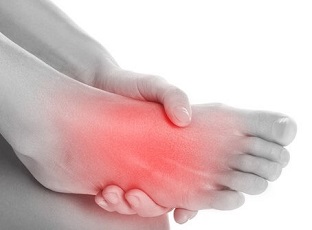- Home
- Common Foot Problems
- Trench Foot
Trench Foot
Written By: Chloe Wilson BSc(Hons) Physiotherapy
Reviewed By: FPE Medical Review Board
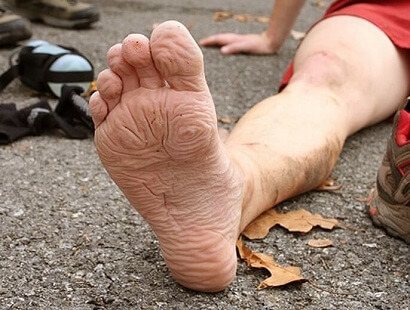
Trench Foot is a painful condition caused by prolonged exposure to cold, wet or damp environments.
It doesn’t require freezing temperatures, but it can lead to foot numbness, swelling, colour changes, nerve damage, and in severe cases, gangrene and amputation if left untreated.
As a physical therapist, I’ve seen how quickly immersion foot can develop, and how dramatically early treatment improves recovery.
In this guide, I’ll walk you through what trench foot is, early warning signs, what it looks like, how it’s treated, how long healing takes and how to prevent it.
What Is Trench Foot?
Trench Foot is a non-freezing cold injury caused by prolonged exposure to moisture and cold. When the feet are cold and wet for too long, the blood vessels constrict, reducing blood flow and oxygen to the tissues.
This leads to skin breakdown, nerve irritation, swelling and tissue damage.
It is also known as Immersion Foot, Crumpet Foot or Non-Freezing Cold Injury (NFCI).
Unlike frostbite, it doesn’t require below-zero temperatures. It can occur in conditions up to 16°C (60°F) and even indoors if footwear stays damp.
Trench foot is one of the less common cause of foot arch pain, numbness and burning sensations.
What Causes Trench Foot?
Immersion foot is typically caused by prolonged exposure to damp, cold conditions and poor environmental hygiene.
Common causes of trench foot include:
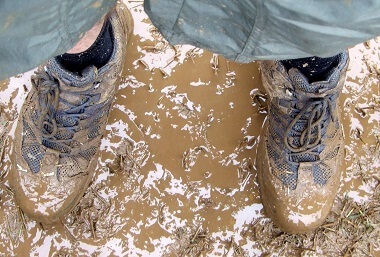
- Prolonged standing in water or mud
- Heavy sweating inside boots or shoes
- Dirty or unhygienic conditions
- Damp socks or shoes that don’t dry out
- Tight or poorly ventilated footwear
The risk of developing immersion foot increases significantly if the conditions last more than 8–12 hours.
Today, non-freezing cold injuries most commonly affect hikers, festival goers, extreme-sports enthusiast, builders, campers and aid-workers.
At the 1998 Glastonbury Festival, doctors treated around 90 cases of trench foot per day due to constant mud and wet weather.
What Does Trench Foot Look Like?
Typical trench foot symptoms include:
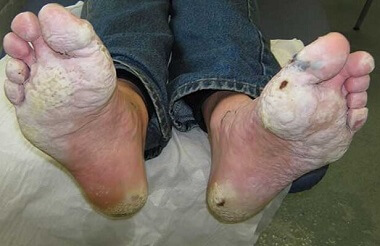
- White or grey, waxy skin, in early stages
- Swollen, painful feet
- Deep red or purple discolouration as circulation returns
- Blisters or peeling skin in advanced cases
- Blackened areas if gangrene develops
Immersion foot can affect the toes, heels or the entire foot.
Early Signs of Trench Foot
Early immersion foot symptoms to look out for include:
- Cold, numb feet
- Pale, white, grey or blotchy skin
- Pins and needles
- Heavy, stiff or wooden-feeling in feet
- Mild swelling
- Prickling or burning sensations
These symptoms appear because the blood vessels have constricted, reducing circulation.
Later Trench Foot Symptoms
If exposure continues, trench foot symptoms become more severe:
- Significant swelling
- Dark red, blue or purple skin
- Constant tingling or burning
- Severe pain as the feet rewarm
- Blistering
- Skin maceration (white, soft, peeling skin)
- Open sores or ulcers
- Foul odour
- Tissue death (gangrene)
At this stage, urgent medical treatment is essential.
Trench Foot Stages
Trench foot disease typically progresses through four stages:
- Cold Exposure Stage: Feet are cold, numb, pale and damp.
- Pre-Hyperaemic Stage: Numbness persists, swelling develops, and skin may appear waxy or mottled.
- Hyperaemic Stage (rewarming stage): As circulation returns, the feet become hot, intensely painful, red, swollen, and hypersensitive.
- Post-Hyperaemic Stage: Long-term symptoms may include cold sensitivity, numbness, excessive sweating, chronic pain or tingling
Understanding the stages helps catch a non-freezing cold injury before serious damage occurs.
How To Treat Trench Foot
Early treatment for immersion foot dramatically reduces the risk of long-term damage. The main goals of trench foot treatment are to restore circulation, dry the feet and prevent infection.
1. Warm the Feet Gently
Rewarm the feet for 5 minutes at a time to improve circulation using:
- Warm (not hot) water
- Warm packs
- Underarm warming
Always check the temperature first, especially if sensation is reduced to reduce the risk of burning.
2. Keep Feet Clean & Dry
Wash feet with warm water
- Dry thoroughly, especially between toes
- Air feet regularly
- Regularly change into clean, dry socks
- Avoid walking barefoot in wet conditions
Good hygiene is one of the best trench foot treatment and prevention strategies.
3. Potassium
Permanganate Foot Bath
This can help draw out excess fluid and reduce swelling and odour but use only as directed by a healthcare professional
4. Manage Pain & Swelling
As feeling returns, pain can spike.
Elevation and gentle warming help reduce discomfort.
5. Infection Control
Antibacterial or antifungal dressings may be advised to reduce the risk of infection.
6. Amputation
In severe cases of non-freezing cold injury when gangrene is present, amputation may be required, but this is now very rare with prompt treatment.
How Long Does Trench Foot Take to Heal?
Recovery from crumpet foot varies depending on how early treatment begins:
- Mild Cases: 1–3 weeks
- Moderate Cases: 4–8 weeks
- Severe Cases: Up to 6 months
As the tissues heal, it is normal to experience:
- Sudden episodes of severe pain
- Blistering
- Burning or tingling
- Itching
- Cold sensitivity
- Excessive sweating
These symptoms usually improve gradually but can last for several months after a non-freezing cold injury.
How to Prevent Trench
Foot
Preventing trench foot disease is far easier than treating it. The best way to avoid non-freezing cold injury is to keep the feet dry:
- Change Socks Frequently: daily or more frequently if in damp conditions
- Use Polypropylene Sock Liners: specially designed to draw moisture away from the skin
- Avoid Wearing Socks In Bed: so feet can air out
- Avoid Synthetic Materials: e.g. rubber or vinyl due to poor ventilation
- Alternate Footwear Daily: so they dry completely between use
- Maintain Good Foot Hygiene: Wash and dry feet thoroughly daily
- Apply Talcum Powder: or Vaseline to reduce moisture
- Control Excessive Sweating: Use drying agents like aluminium chloride, or in extreme cases Botox
Always talk to your doctor first before trying trench foot treatments.
Celebrity Trench Foot Sufferers
Anyone can get immersion foot! Check out this list of famous sufferers of NFCI:
- JRR Tolkien, author of Lord of The Rings, contracted Immersion Foot during WW1
- Actor Jeremy Irvine got Trench Foot whilst filming War Horse
- Actress Joanna Lumley suffered from Trench Foot when cast away on a desert island filming the TV documentary Girl Friday
History Of Trench Feet
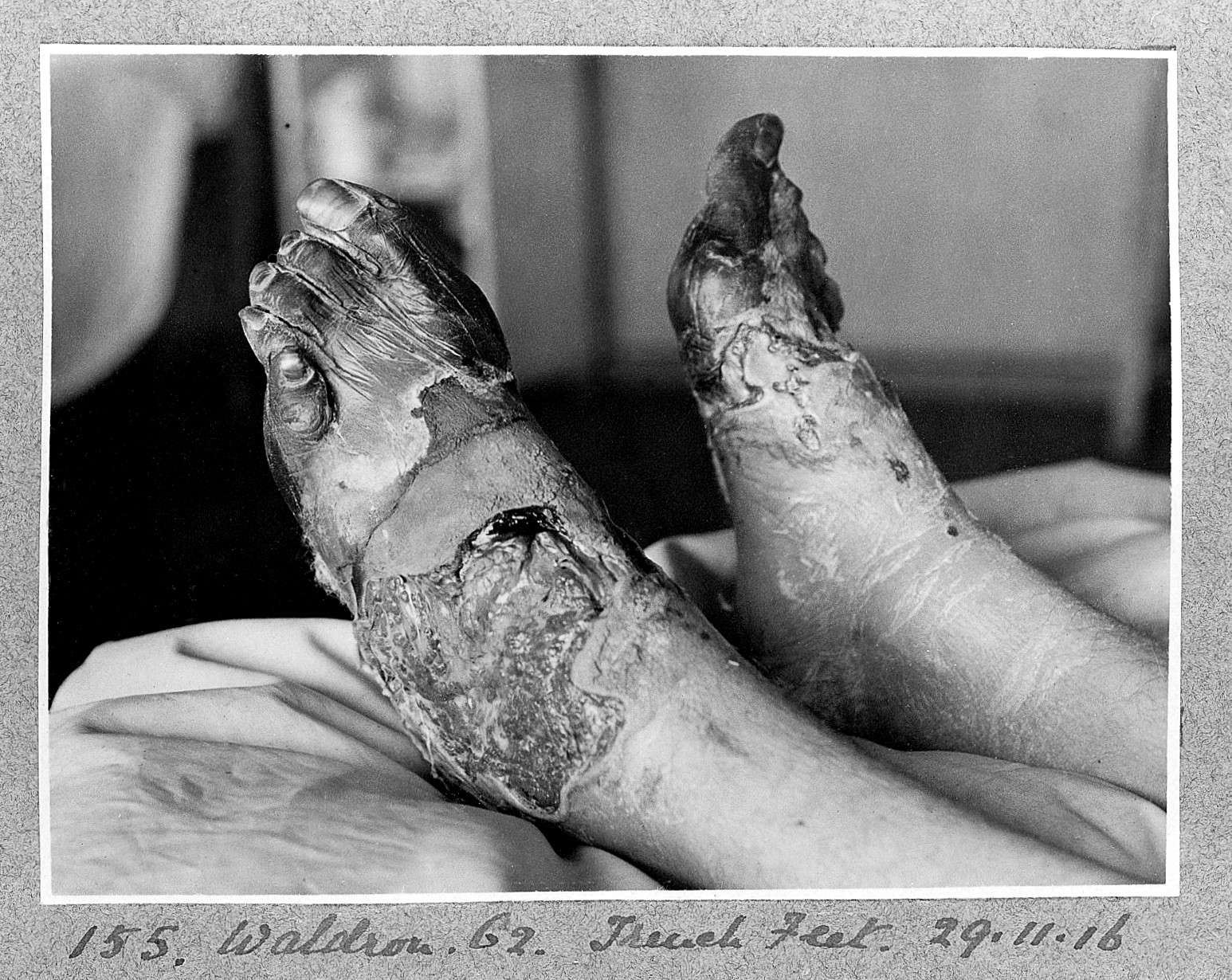
Trench foot was first described in Napoleon’s army in 1812, but became infamous during World War I, when more than 20,000 British soldiers were affected during the winter of 1914–15.
Improved trench drainage, dry socks and better hygiene dramatically reduced numbers.
But immersion injuries still occur today in wet, cold or poorly ventilated environments such as camping festivals.
Trench Foot Disease Summary
Trench Foot, also called Immersion Foot or NFCI, is a condition caused by long periods of exposure to cold, wet or damp environments. It leads to numbness, swelling, colour changes and pain as blood flow to the feet reduces.
Early signs include cold, pale, tingly feet; later stages may cause blisters, peeling skin and gangrene.
Treatment for trench foot disease involves gently rewarming the feet, keeping them clean, dry and warm, and using antibacterial dressings if needed. Most cases improve in 1–8 weeks, but severe cases can take up to 6 months to fully recover.
You can prevent immersion foot by keeping feet dry, changing socks often, wearing moisture-wicking liners and ensuring footwear dries completely.
You may also be interested in the following articles:
If Trench Foot doesn't sound like your problem, you can find out about other common causes of foot pain in the foot conditions section.
Related Articles
References
- National Library Of Health: Trench Foot. by Jeffrey S. Bush; Trevor Lofgran; Simon Watson. August 2022
- Clinical & Experimental Dermatology: A review of trench foot: a disease of the past in the present. by K. Mistry, C. Ondhia & N.J. Levell
Page Last Updated: 2nd December, 2025
Next Review Due: 2nd December, 2027
